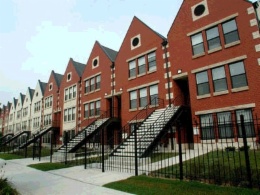The 9 percent LIHTC fixed-rate was established as part of the Housing and Economic Recovery Act of 2008 and was renewed in the “fiscal cliff” deal – the American Taxpayer Relief Act of 2012 – in January 2013. After the expiration of the 9 percent fixed-rate, housing projects that have already received their allocations will get to continue to use the fixed rate. However, projects receiving LIHTC allocations after December 31, 2013 will have to use a floating rate.
The Floating Rate
 The rate at which LIHTC projects generate tax credits will float according to a present-value formula based on the federal cost of borrowing, which has been low since the economic downturn and credit crisis. The floating rate is often more than a full percentage point below 9 percent. However, the rate has recently been about 7.6 percent. According to Affordable Housing Finance online (www.housingfinance.com), moving to the floating rate will lead to a significant loss of tax credits for projects—as high as 18 percent of a project’s total LIHTCs over 10 years, according to some experts.
The rate at which LIHTC projects generate tax credits will float according to a present-value formula based on the federal cost of borrowing, which has been low since the economic downturn and credit crisis. The floating rate is often more than a full percentage point below 9 percent. However, the rate has recently been about 7.6 percent. According to Affordable Housing Finance online (www.housingfinance.com), moving to the floating rate will lead to a significant loss of tax credits for projects—as high as 18 percent of a project’s total LIHTCs over 10 years, according to some experts.
While legislators attempt to craft major reform of the U.S. tax code, they have not been passing changes or extensions to tax law. Congressman Paul Ryan (R-WI) recently stated that Republicans are planning to introduce tax reform legislation in the first quarter of 2014 but bi-partisan compromise on this massive initiative is unlikely. In the meantime, smaller bills to extend provisions of the tax code have stalled in committee
Strategies
In response to the expiration of the 9 percent fixed-rate, state housing agencies have to go back to the prior process of requiring applications to utilize the floating rate. Some agencies are offering financing options, such as soft funds, to help fill the gap. However, such resources have been quite limited as states have generally been stressed due to budget cuts. Other states are simply offering eligible basis boosts which will allow projects to claim more LIHTCs but will decrease the overall number of tax credit awards.
TCAM continues to monitor new developments in tax reform legislation and its impact on the LIHTC program. For the latest updates, contact us at Steve Spall (sspall@tcamre.com) and Allen Feliz (afeliz@tcamre.com) — (617) 542-1200.




